

Decades-old homes throughout the United Kingdom often conceal an invisible problem within their walls: the gradual breakdown of metal plumbing, known as pipe corrosion. This process occurs as water, air, and minerals react with the metal—most commonly copper or steel—leading to the formation of rust and mineral deposits. Over time, even the most robust Victorian-era pipes can succumb, resulting in structural issues, unexpected leaks, and costly water damage. Understanding the various dimensions of pipe corrosion is important for those living in period properties, particularly when calculating repair costs, assessing property risk, and evaluating insurance coverage options.
Pipe corrosion doesn’t just pose a threat to water quality or pressure—it can become an expensive issue with far-reaching implications for homeowners. The wear on plumbing in older UK homes intensifies with age and frequent use, making it imperative for anyone in period properties to become familiar with the warning signs, expected costs for repair or replacement, and how these risks might affect their insurance status. Some homeowners are surprised to discover that not all insurance policies cover issues arising from aged, corroded plumbing.
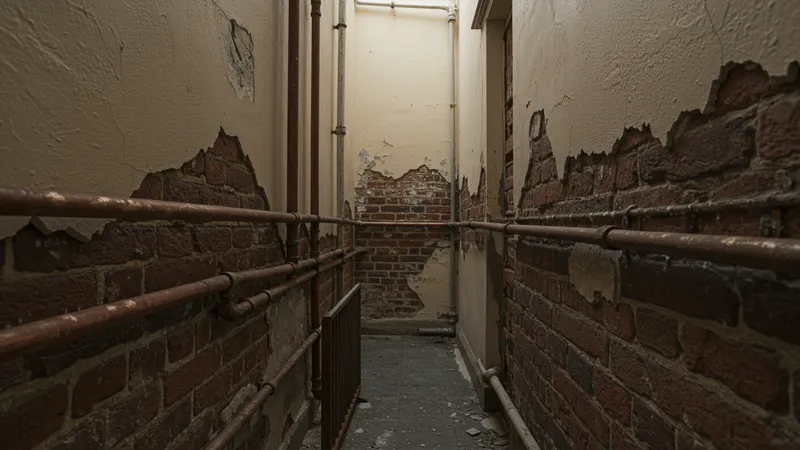
In the UK, certain policies—like British Gas Plumbing & Drains Cover—specifically address failures stemming from internal corrosion by covering repairs to both visible and concealed pipework. Others, such as Co-op Home Insurance, offer add-ons such as “trace and access” cover to locate hidden leaks, a common consequence of pipe corrosion in older residences.
Direct Line Home Insurance stands out for its flexibility, giving property owners choices to include accidental damage protection. This is especially relevant when an ageing pipe unexpectedly bursts due to corrosion, as the costs can quickly escalate into the thousands once water escapes and damages interiors.
The average cost to repair corroded pipes in a typical UK period home ranges from £300 for minor repairs to £4,000–£7,000 if extensive pipe replacement is required. Older houses with inaccessible piping (e.g., beneath floorboards) or listed building restrictions can see costs rise, especially if specialist restoration is needed to preserve heritage features.
Despite proactive cover, many policies have clauses excluding gradual wear-and-tear, underscoring the importance of regular plumbing inspections and maintenance records. Without documented upkeep, homeowners may face challenges when submitting corrosion-related insurance claims.
For owners of UK homes built pre-1970, understanding how the gradual breakdown of pipes can ripple through property value, repair costs, and insurance options is essential. The deeper details reveal even more valuable insights ahead—especially for those hoping to avoid unpleasant surprises lurking beneath the floors and behind the walls.
Pipe corrosion brings about more than just water leaks; it can have serious structural and financial implications for homeowners in the United Kingdom. As pipes oxidise, they can develop pinhole leaks or even larger bursts, often undetectable until water stains or dampness appear. In older properties, the risk is heightened by outdated pipe materials and decades of mineral buildup. This puts homeowners in a vulnerable position, as undetected leaks can damage wooden floors, plasterwork, and even compromise the foundations of period homes, resulting in expensive restoration.
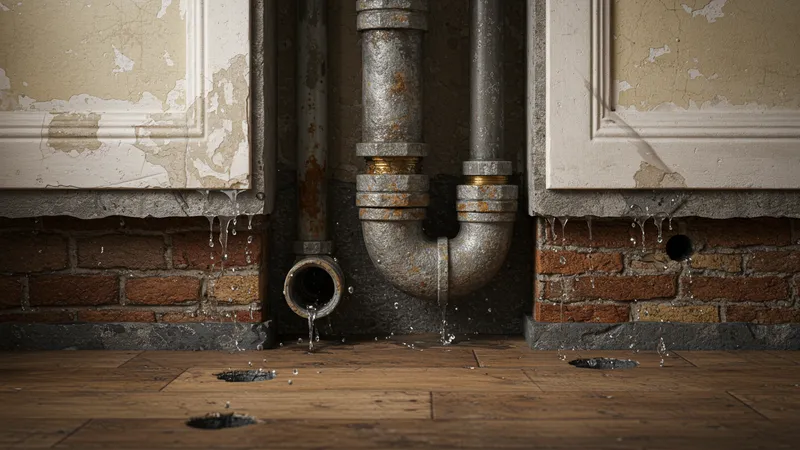
From a legal perspective, UK homeowners are typically liable for maintaining the internal plumbing within their property boundaries. Should a corroded pipe burst and cause water damage to a neighbouring property, liability for resulting repairs may fall on the property owner where the fault originated. This can become costly if insurance coverage is lacking or if a policy excludes damage caused by gradual deterioration, which is not uncommon for older homes in the UK.
Another layer of complexity arises from homeowner obligations under building regulations. When replacing corroded pipework in historic UK homes, owners may be required to use specific, period-appropriate materials and work with approved contractors—especially in listed buildings. Non-compliance can lead to legal complications and the need to redo repairs, adding further unexpected costs to what might have seemed a simple plumbing fix.
The environmental risks are also notable: leaking metal pipes can result in the loss of hundreds of litres of water daily, contributing to higher utility bills and unnecessary demand on local water supplies. Chronic leaks can also encourage mould and microbial growth, affecting the long-term condition of the home. The intricate relationship between property maintenance, statutory obligations, and environmental responsibility makes it clear that UK homeowners must proactively manage corroded pipes, both to protect their investments and remain compliant with national standards.
The cost of addressing corroded pipes in older UK homes can fluctuate significantly, depending on several key factors. First and foremost is the extent of the corrosion: minor surface build-up may require limited repairs, whereas widespread internal rusting often demands complete pipe replacement. The age and material of the original plumbing—common examples include galvanised steel or lead piping—also play a role, as these older types are costlier to remove and replace.
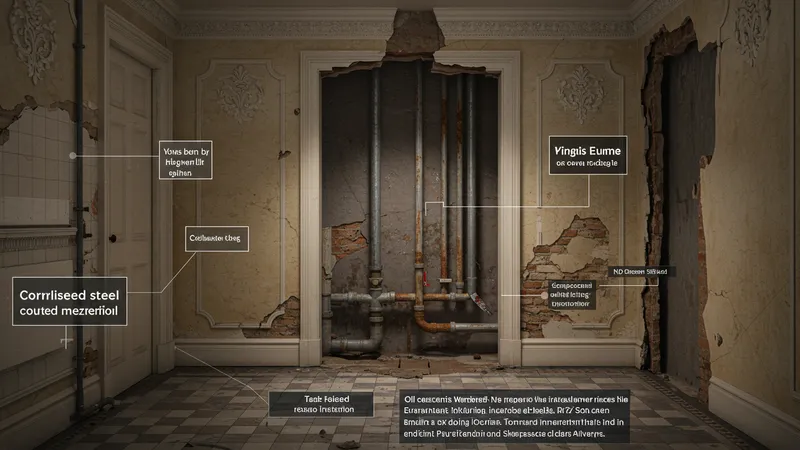
Labour expenses are a significant consideration in the UK, with rates varying by region. London and the South East often command higher hourly fees for qualified plumbers. A straightforward pipe section swap might cost as little as £150–£300, but if wall removal, furniture moving, or heritage restoration is required, prices can quickly reach £4,000 or more. Period homes with limited access, such as those with pipes hidden behind ornate plasterwork or tiled floors, may double expected outlays.
It’s also essential to factor in the expense of possible secondary repairs. Water escaping from corroded pipes may damage flooring, electrical systems, or decorative ceilings in heritage properties—none of which is typically covered by a basic plumbing repair quote. In listed houses, there may be a requirement for specialist restoration trades, elevating the final invoice even further.
For insurance purposes, some UK providers offer policies that specify contribution limits for pipe replacement and associated building works. Reviewing terms carefully and maintaining clear photo documentation of all repairs is crucial. Thorough records not only support successful insurance claims but may also help contain costs by providing evidence of preventative maintenance should a dispute arise over a corrosion-related payout.
Insurance cover for pipe corrosion in older UK homes varies significantly by provider and policy type. While standard home insurance typically covers water damage from “sudden and unforeseen events,” such as a pipe bursting, gradual damage due to corrosion is often considered a maintenance issue—making it commonly excluded from base cover. To address this risk, some property owners opt for specialist add-ons like “trace and access” or “home emergency cover,” which increase the chance of approval for related claims.
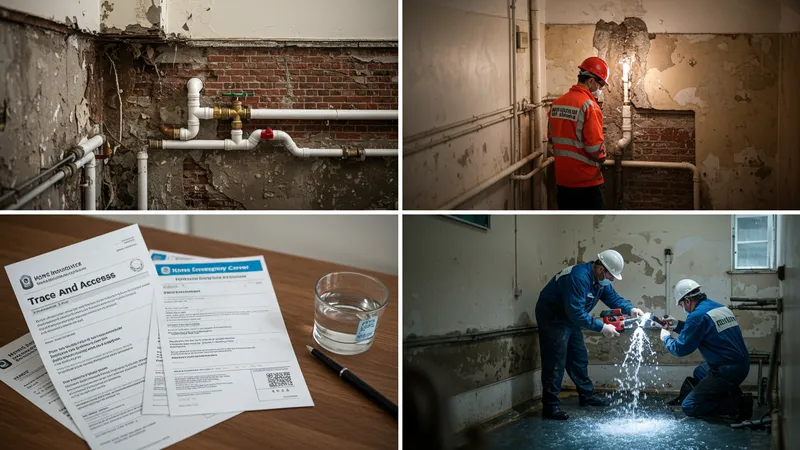
Products such as the British Gas Plumbing & Drains Cover stand out by including emergency callouts and repairs for corroded pipework—particularly valuable for period houses where immediate intervention is needed to prevent water damage escalation. Meanwhile, Co-op Home Insurance policies with “trace and access” options help homeowners locate and fix hidden leaks, a common scenario in Victorian or Edwardian homes where pipe routes are obscured by age-old walls.
Even among comprehensive policies like Direct Line Home Insurance, exclusions for gradual deterioration remain. As a result, experts recommend a careful annual review of all insurance documents. Homeowners may benefit from scheduling regular plumbing surveys and keeping maintenance logs to strengthen their position should a claim for corrosion-related damage arise.
The competitive UK insurance market gives older property owners avenues for protection, but there is no substitute for preventative attention to plumbing and a full awareness of possible coverage gaps. Missing these details can lead to unwelcome cost burdens when ageing pipes fail, so understanding the fine print is indispensable.
Managing pipe corrosion in older UK properties requires a blend of preventative maintenance, awareness of modern repair techniques, and the smart use of insurance options. One effective approach is to schedule annual inspections with certified plumbers, who can identify early signs of corrosion such as green-blue staining or minor leaks. In many regions, local councils and historic building trusts offer recommendations for approved specialists experienced in preserving period features while upgrading pipework.
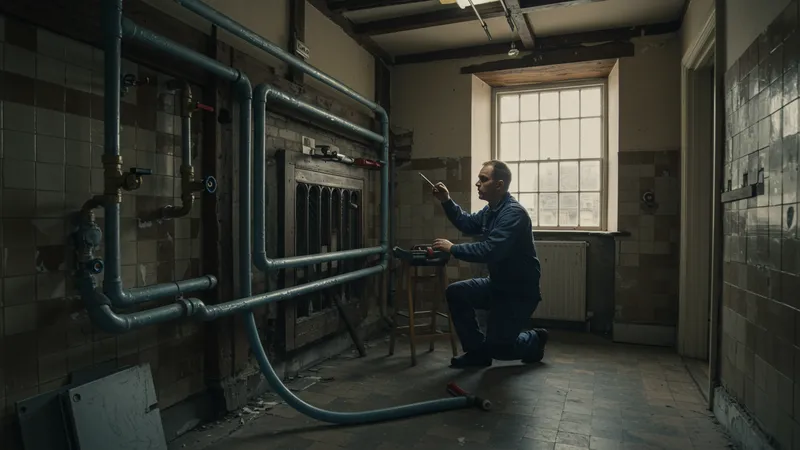
Pipe relining—a non-invasive method where a resin lining is inserted inside existing pipes—is increasingly popular in UK homes. This technique reduces disruption and can be cost-effective, particularly for listed buildings where full pipe replacements would compromise historic structures. While the upfront cost (£800–£2,000 for a typical home section) may seem steep, it often eliminates future expenses related to emergency restoration or extensive decorative repairs.
Regular review of insurance documents is essential to stay current on what types of corrosion and related damage are included. Homeowners can sometimes negotiate optional covers or higher claim limits with their current providers. Investing in professional property surveys and photographic documentation also strengthens any case for insurance payouts should issues arise, adding another layer of financial security.
Ultimately, while pipe corrosion is an inevitable risk for those living in the UK’s heritage housing stock, strategic maintenance, smart restoration choices, and the right insurance policy can mitigate disruption and financial loss. The combined approach not only preserves the charm and structural integrity of period homes, but also ensures peace of mind for the years ahead.